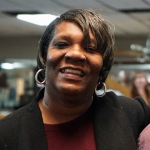
Ms. Pam Korza
Artists as Essential Workers with and within Local Government: Models & 3 New Resources for a Creative Way Forward
Posted by May 29, 2020

Ms. Pam Korza
In early April, as the City of Boston became an escalating COVID-19 “hot spot,” Mayor Martin J. Walsh’s office responded with forceful measures on many fronts. In the midst of extreme circumstances, on April 3, the Mayor’s Office of Arts and Culture (MOAC) also announced the fourth cohort of artists-in-residence in its Boston AIR program. The program pairs local artists and staff from City of Boston departments to co-design projects that test new approaches to City policies and processes and that often address the social and political context of that year. In the years ahead, municipal and county government officials face unfathomable challenges in recovery and reconstruction stemming from COVID-19. Programs such as Boston AIR and Los Angeles County's Creative Strategist Artist-in-Residence have demonstrated that artists working in partnership with government are essential workers who bring creative practices and solutions to issues that municipalities face. Local arts councils and commissions often play a big role in conceiving and coordinating these programs in tandem with local government.
Read More






















